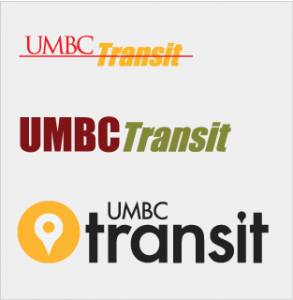
In 1977 . . . UMBC Transit was born and known as UMBC Shuttle. The shuttle was a simple single-van service, initially operated by the Residential Life Office and staffed by part-time undergraduate students, which transported graduate students to campus from what we now know as the Charlestown Retirement Community located off of Maiden Choice Lane in Catonsville.
Over the next few years . . . as the population of commuting students at UMBC grew, the Commuting Students Association, an active student committee in The Student Government Association (SGA), elected to have a department established to specifically focus on developing services designed to address the transportation needs of commuting students at UMBC. The result was the advent of the Office of Commuter Affairs. The management and supervision of the UMBC Shuttle transferred from the Residential Life Office to the Office of Commuter Affairs, while the routing and staffing were broadened as a student fee support structure was being developed. In addition to the regular shuttle service, a charter operation was established to provide fee-based trips off-campus to further support expansion and also to provide broader educational opportunities for the UMBC community.
In the late eighties . . . UMBC Shuttle became independent of the Office of Commuter Affairs, focusing specifically on transportation needs only and reporting to the University Center, while the social and programmatic affairs were placed with the newly created department of Off-Campus Student Services (OCSS). Both areas were managed under the Division of Student Affairs.
From 2004 to the present day . . . UMBC shuttle and charter bus services evolved into UMBC Transit. Based upon data gathered from annual assessments, customer requests, feedback, and increased interaction with the SGA, the voices of the ridership resulted in unprecedented operational improvement to the services offered. New routes were added and existing bus stop shelters on campus were replaced with modern “green” solar powered units. Currently, the fleet is comprised of state-of-the-art transit buses; the demand for additional staffing continues to grow, and charter contracts to support our services continue to increase. Recently, UMBC Transit married customer access with convenience in the form of Transit Tracker, a real-time, GPS driven application, providing riders with convenient up-to-the-minute access of current shuttle bus locations from any web accessible computer or mobile device.
The future . . . is full of promise. UMBC Transit, in support of the campus Climate Change Task Force, focuses on reducing UMBC’s carbon footprint by providing fuel efficient shuttle buses through fleet renewal and the development of more convenient routes based on the needs of those students, faculty, and staff living near campus within the reachable range of shuttle services. Continued integration of new technologies to improve the reliability and convenience of our shuttle schedules is also emphasized. Commuter connection points with other mass transit providers as well as increased ridership take center stage among our priorities as we continue moving forward.